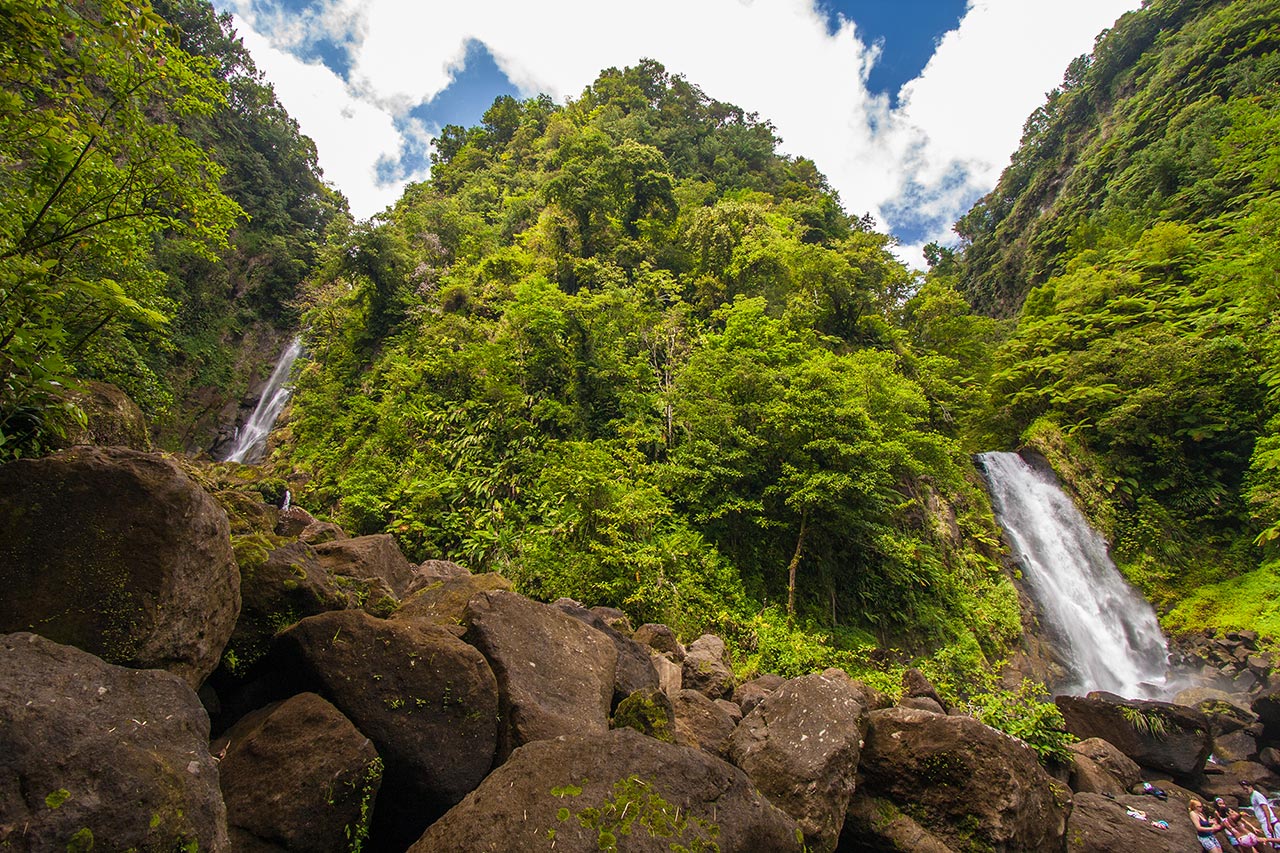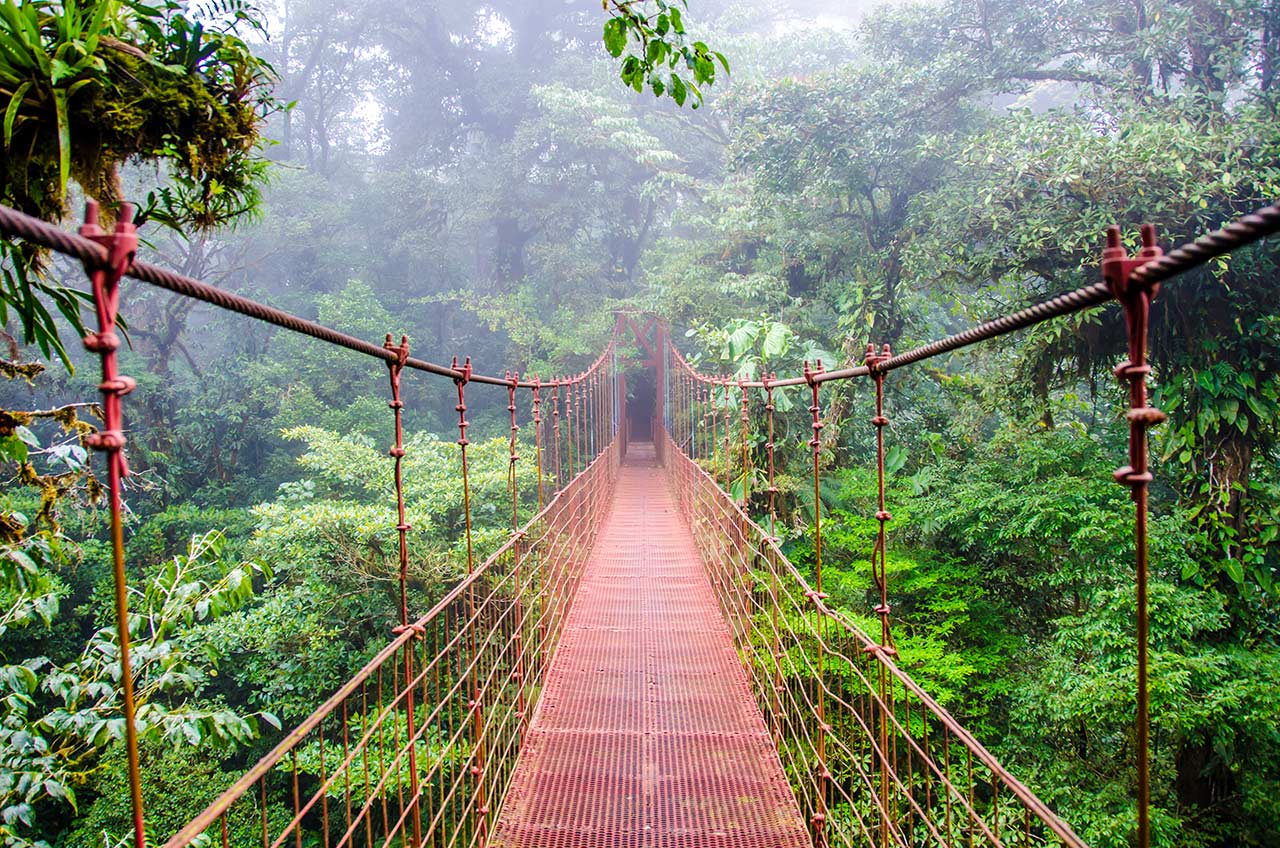Sustainable Travel: 8 Best Islands For Ecotourism
Not only are these islands beautiful, their communities take sustainable travel very seriously.
Editor's Note: Some of the information below may be out-of-date. Dominica and the U.S. Virgin Islands were heavily impacted by Hurricane Irma and Hurricane Maria. Please visit caribbeantravelupdate.com for updates.
In honor of Earth Day, we're highlighting ecotourism destinations that double as sublime vacation spots. Climate change and the subsequent impact to the global environment stands at the fore of many people's consciousness, and the United Nations has declared 2017 the Year of Sustainable Tourism. That's why making responsible travel choices has become all the more crucial. These coastal and island communities have all made environmental stewardship and ethical tourism practices a priority, allowing visitors to enjoy their beauty while minimizing human impact.
Dominica
Deep in the center of the Caribbean Sea between Martinique and Guadeloupe, lies a lush, volcanic island packed with ecological wonders. Self-proclaimed the "Nature Island of the Caribbean," Dominica launched its green efforts long before doing so became a trend. (The island has held court as a centerpiece in the world's ecotourism industry for well over a decade.) Known for its incredible biodiversity, hundreds of rare plant, animal, and bird species — including the native Sisserou parrot — call the 290-square-mile island home. Trails through pristine rainforest lead to stunning waterfalls and natural, bubbling hot springs while secluded black-sand beaches nestle between rocky cliffs. And as the whale-watching capital of the Caribbean, visitors delight in spotting pods of cetaceans frolicking in the waters off Dominica's shores.
St. John, U.S. Virgin Islands
With its crystalline, turquoise waters that lap gently at flawless, powder-white beaches, St. John, the smallest of the USVI, embodies the archetypal tropical paradise. It also remains blissfully untouched in comparison to many of its Caribbean neighbors, largely due to the fact that more then two-thirds of the island falls under the stewardship of the National Park System. Beyond the reaches of land, an additional 12,708 underwater acres comprise Coral Reef National Monument, a veritable swim-through aquarium replete with breathtaking marine life. A lush volcanic haven wrapped in laid-back island ambience, St. John invites visitors to explore endless idyllic beaches or hike to secluded snorkeling spots in sheltered coves where graceful sea turtles munch lazily on the sea grass below.
Nevis
Home to more monkeys than people, tiny Nevis, nestled in the northern region of the Lesser Antilles, is working hard to establish itself as "the greenest place on earth," aiming to source 100 percent of its energy from geothermal sources within the next year. Because buildings are forbidden to rise higher than 1,000 feet above sea level, only swaying palm fronds interrupt views over the dramatic volcanic landscape. Trails through verdant rainforest dotted by natural hot springs, plantation ruins, and forty varieties of mango wind up towering Nevis Peak, visible from almost everywhere on the island. Down below, inviting beaches — all of which are public — circle the island's sandy shoreline.
The Galapagos Islands
As the birthplace of evolutionary biology, the Galapagos archipelago, approximately 600 miles off the Ecuadorian coast, prevails as a true mecca for ecotourism aficionados and nature enthusiasts alike. Home to a remarkable range of animal and plant species, the Galapagos became the first UNESCO Natural Heritage Site for Humanity in 1978 and boasts one of the world's most unique ecosystems. 97 percent of the Galapagos is protected national park or marine biosphere reserve and travel to the islands is closely managed, requiring the company of guides. Each of the mostly uninhabited islands offers its own distinctive landscape and the animal residents are so at ease in their surroundings that its not unlikely to see them interacting with their human visitors both on land and sea.
Grenada
Playing host to waterfalls, volcanic hot springs, and a vast array of indigenous flora and fauna, island locales like Levera National Park and Grand Etang Forest Preserve have helped Grenada's place within the ecotourism niche flourish in recent years. Efforts to protect both natural rainforest and prolific coral reef systems make the island's "Pure Grenada" moniker an accurate one, and Grenada's work to construct coral nurseries and promote ecotourism make the island a prime destination for sustainable tourism. Grand Anse Beach, often considered one of the world's loveliest, remains one of the historic Spice Island's stars.
Little St. Simons Island, Georgia
The jewel of coastal Georgia's Golden Isles, this privately owned, low-country oasis has a long legacy of environmental stewardship and virtually no development. The historic hunting lodge and five welcoming cabins accommodate a total of 32 guests per night who have the island's 11,000 protected acres all to themselves. A nature lover's paradise, Little St. Simons Island boasts a staff of talented onsite naturalists who lead a variety of activities each day, from kayaking through labyrinthine tidal marshlands to creek fishing, bird watching and wildlife hikes. Beach cruisers allow visitors to pedal out to the island's 7-mile long private beach where nesting sea turtles find a safe haven to lay their eggs.
Costa Rica
Dubbed the "rich coast" by 16th century Spanish conquistadors, the Central American republic of Costa Rica adheres to sustainable tourism practices that emphasize resource efficiency, protection of biodiversity and economic development within the local community. Abundant wildlife — a half-million species of flora and fauna can be found here — as well as lush jungle, 750 miles of unspoiled beaches, and a proliferation of eco-lodges overlooking the Pacific Ocean are just a few highlights. With its deep passion for la pura vida, Costa Rica endures as an early advocate of wellness travel, encouraging visitors to feed their souls by immersing themselves deeply in the country's culture and nature.
Vancouver Island
Known for its lush, emerald rainforest and temperate climate, this 12,000-square-mile island off the Pacific northwest coast of Canada provides a rich habitat for the abundant wildlife who make their home within a variety of diverse ecosystems including salt marsh, freshwater lakes, alpine rivers and sandy ocean shores. Within both the Pacific Rim National Park Reserve and the Clayoquat Sound Biosphere Reserve, visitors can spot black bears, sea lions, pods of whales, and a variety of shorebirds, as well as stunning, old-growth spruce and cedar forest. Wild and windswept, Vancouver Island holds strong as a premier destination for salmon fishing, ocean kayaking, hiking, and whale watching within Canada's unspoiled coastal wilderness.







